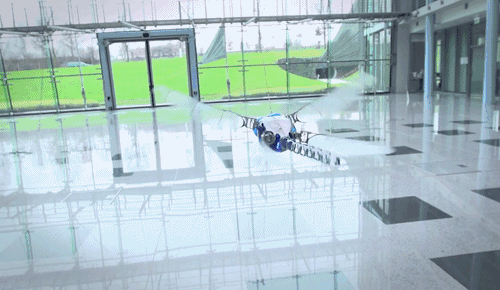COURSE OBJECTIVES
To introduce the concepts of mass, momentum and energy conservation relating to aerodynamics.
To make the student understand the concept of vorticity, irotationality, theory of airfoils and wing sections.
To introduce the basics of viscous flow.
UNIT 1 REVIEW OF BASIC AERODYNAMICS 9 Hrs.
Atmosphere- Air speeds- Aerodynamic definitions Types of Drag- General Aerodynamic characteristics of airfoil sections-Complex potential-Singularities-Equations of Vortex-doublet and Rankine oval - Lift and Drag on cylinder and Aero foil.
UNIT 2 LOW SPEED FLOW 9 Hrs.
Models of the fluid: control volumes and fluid elements. Continuity, Momentum and energy equations. Substantial derivative, incompressible Bernoulli’s equation.
UNIT 3 AIRFOIL AND CONFORMAL TRANSFORMATION 9 Hrs.
Airfoils Nomenclature and NACA series, Airfoil Characteristics, Vortex sheet, Kelvin Circulation theorem Thin aerofoil theory and its applications. Joukowski transformation and its application to fluid flow problems.
UNIT 4 WING THEORY 9 Hrs.
Introduction to Finite wing, Downwash and Induced Drag, Biot -Savart law and Helmhotz’s theorems, Horse shoe vortex, Prandtl’s Classical Lifting line theory and its limitations.
UNIT 5 VISCOUS FLOW 9 Hrs.
Derivation of Navier-Stokes equation for two-dimensional flows, boundary layer approximations, laminar boundary equations and boundary conditions, Blasius solution, qualitative features of boundary layer flow under pressure gradients, Integral method, aspects of transition to turbulence, turbulent boundary layer properties over a flat plate at low speeds. Separation of flow over bodies stream lined and bluff bodies, Lift and Drag on cylinder and Aero foil.
COURSE OUTCOMES
On completion of the course, student will be able to
CO1 - Apply aerodynamics concepts.
CO2 - Develops mathematical modelling ability.
CO3 - Differentiate between ideal and real flows.
CO4 - Model flow over wing.
CO5 - Understand the real time viscous flow.
CO6 - Understand the Boundary Layer behaviour.
TEXT / REFERENCE BOOKS
1. Aerodynamics for. Engineering Students. Sixth Edition. E.L. Houghton. P.W. Carpenter. Steven H. Collicott. Daniel T. Valentine, 2013 Elsevier, Ltd.
2. Bertin, John J., Aerodynamics for Engineers, Pearson Education Inc., 2002.
3. John J. Bertin, Russell M. Cummings, “Aerodynamics for Engineering students”, Sixth Edition,Pearson,2013.
4. Anderson J.D., “Fundamentals of Aerodynamics”, Sixth Edition , McGraw Hill Book Co., NewYork,2017.
5. Schlichting H., “Boundary layer theory” , Seventh Edition, McGraw Hill, NewYork 2014.

- Teacher: Madhan Kumar G
